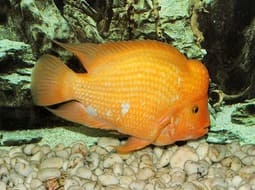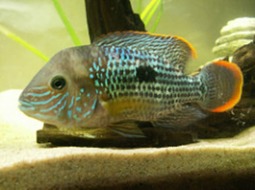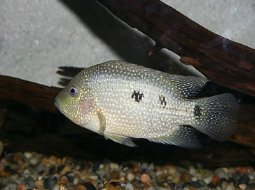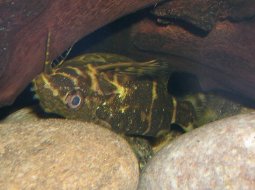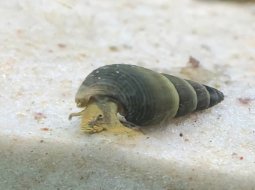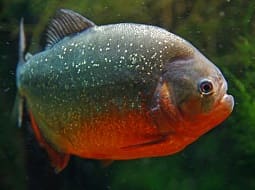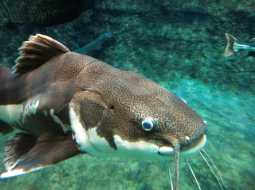
Loading Aqualapp ...
Care and Compatibility of Black bullhead - Ameiurus melas
Introduction
The Ameiurus melas, commonly known as Black Bullhead, is a species of freshwater fish belonging to the Ictaluridae family. It is characterized by its elongated and cylindrical body, with a predominantly dark coloration that gives it its common name. This fish is native to North America and is widely distributed in rivers, lakes, and ponds of the region.
Behavior
The Black Bullhead is a nocturnal fish and is mostly found at the bottom of the water bodies it inhabits. It is an opportunistic predator that feeds on a variety of foods, including insects, crustaceans, small fish, and plant matter. Due to its size and predatory nature, it is recommended to keep it in spacious aquariums with hiding spots and provide it with a balanced diet.
Sexual Dimorphism
Sexual dimorphism in Ameiurus melas is minimal and difficult to distinguish. Both males and females have a similar appearance. However, during the breeding season, males may exhibit more pronounced territorial behaviors.
Reproduction
The reproduction of the Black Bullhead occurs in spring or summer. During this period, the male constructs a nest in a protected area and attracts the female to deposit the eggs. Once the female deposits the eggs, the male fertilizes them and guards them in the nest. After hatching, the male continues to care for the fry until they are large enough to fend for themselves. It is important to provide a suitable environment and conducive conditions for breeding in the aquarium if breeding this species is desired.
Aquarium Conditions
Ameiurus melas, also known as black bullhead, is a freshwater bottom-dwelling fish that requires a spacious aquarium with soft substrate and hiding spots. It prefers well-oxygenated water and moderate temperature. Aquarium décor should include rocks, driftwood, and sturdy plants. It's important to provide them with a varied diet and maintain water quality.
Feeding
The Black Bullhead is a carnivorous fish and feeds on a variety of prey. In captivity, it can be offered live foods such as bloodworms, shrimp, or small fish. It also accepts frozen foods and high-quality pellets designed for carnivorous fish. It is recommended to feed it appropriate portions and avoid overfeeding to maintain its health and well-being.
Complexity
Caring for Ameiurus melas can be moderately challenging. They are hardy fish but can be prone to obesity and swim bladder issues if overfed. They require regular aquarium maintenance and are compatible with other peaceful bottom-dwelling fish.
In case you need more help, or if you want to know into any topic related to the Ameiurus melas (Black bullhead) and even any other species you can use the forums to ask what you need.
To do an analysis more detailed about coexistence and behavior of Ameiurus melas (Black bullhead) use the Aquarium simulation tool, if you do this you can test different ways to combine the Black bullhead with other fishes giving the dimensions and space on you aquarium, on this way you can known the optimal configuration for keep the fishes that you want.
You can also find out the 24 species compatible with the Ameiurus melas (Black bullhead) can live together.
Note: The parameters of the water such as PH and temperature are also used to calculate the compatibility of the species.
Compatible species (24)
Compatible (4 Species)
Compatible without any restriction
Similar Sizes (12 Species)
They can coexist if they are the same size or very similar sizes, it does not work in all cases, there may be exceptions.
With Reservation (6 Species)
Las especies territoriales por lo general pueden convivir con especies protegidas con coraza, ya que no pueden hacerles daño por su dura piel, lo que si hay que tener en cuenta es tener un acuario con dimensiones favorables para que cada pez pueda delimitar un territorio, ya que la mayoría de peces acorazados son también peces de fondo y les gusta estar buscando lugares donde ocultarse.
Compatible in some cases, it depends on the nature and personality of the fish.
Considerable size difference (1 Species)
They can coexist while they are similar in size or the size difference is not very abysmal, since as the fish grows it increases the chances of eating its partner that did not grow much.
Compatible if space is enough (1 Species)
They can coexist together if the aquarium they share is large and spacious enough for both species to feel good, as some fish may attack others to feel that they have little space and try to eliminate the competition.
Black bullhead
Ameiurus melas
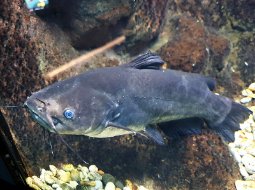
- Ph: 6 - 7.6
- Temperature (c°): 8 - 30
- Measures: 35 cm - 45cm
- Aquarium Capacity:
180 Liters - 48 Gallons - Alimentación: Carnivores
- Colores: Black, Gris
- Comportamiento: Aggressive, Likes to take refuge, Night, Territorial
- Habitad: American
- Morfología: Thorns or pointed
- Preferencias del Acuario: Logs, Rocks
- Tamaño: Very Big
- Taxonomía: Fish
- Tipo de Agua: African, Sweet water, Tropical waters
- Velocidad de nado o movimiento: Normal
- Zona de Nado: Aquarium background

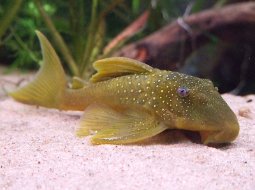

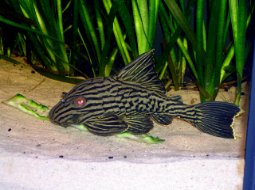

.jpg)


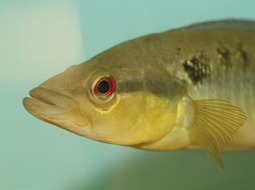
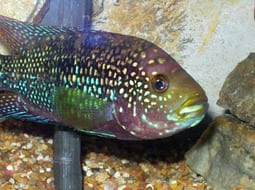
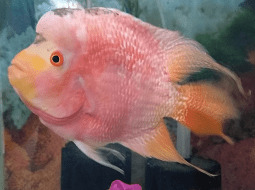
.jpg)
